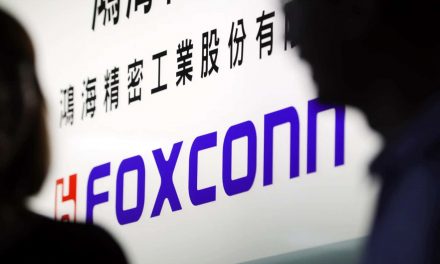
An aging electric grid, fossil fuel power plant retirements and a massive renewable electricity buildout are all contributing to a boom in transmission and distribution wire projects by electric utilities across the country.
In 2020, investor-owned electric utilities spent $25 billion on transmission, up from $23.7 billion in 2019, figures that the Edison Electric Institute, which represents investor-owned electric companies, expected to only grow going forward.
Ohio-based American Electric Power, which is one of the nation’s largest electric companies and which operates the largest transmission system in the country (serving 5.5 million customers in 11 states) said last year that it plans to spend $23.3 billion between 2022 and 2026 on transmission and distribution.
But much of that spending is happening on local projects in states with widely differing regulatory regimes. And there’s been growing concern at the state and federal level that too much of it is occurring without enough transparency and oversight to ensure transmission owners are appropriately planning for new technology, considering more cost-effective regional approaches or alternate solutions and not ripping off their ratepayers.
“There’s going to be a significant amount of transmission built,” Federal Energy Regulatory Commission Chairman Richard Glick said at a Nov. 15 meeting of a joint federal and state task force on electric transmission. “We need to make sure consumers get the best bang for their buck.”
The meeting came more than a month after a FERC technical conference during which electric utility regulators and consumer counsel from a wide variety of states said, to varying degrees, that they often lacked the authority, information and expertise to properly vet and oversee the rising number of transmission projects happening in their states.
That has led to growing support for the idea of an independent monitor to examine the need, costs and planning behind the wave of new projects to protect customers and ensure utilities — for whom transmission spending and the return on equity it comes with is a major profit stream — are looking beyond their own narrow financial interests.
“It is inexplicable, other than perhaps explained by utility influence, that massive expenditures for these utility local transmission projects are being charged to consumers without the government regulatory oversight that has been developed over a century for consumer protection,” Mike Haugh, director of the analytical department at the Office of the Ohio Consumers’ Counsel, wrote in comments to FERC in support of independent transmission monitors.
“The ITM would allow for another level of protection for consumers that are paying for the transmission system.”
Not everyone, of course, is on board. Electric companies and transmission owners see it as an unnecessary layer of bureaucracy, and even some utility regulators say it’s a job best left to states.
‘Screams out for more oversight’
At the task force meeting November 15, Andrew French, a commissioner at the Kansas Corporation Commission, which regulates electric utilities, said transmission costs in his state have gone from $4 a month on the average customer’s bill 10 or 15 years ago to $20 today.
“We are seeing a flood of capital investment in that area and that screams out for more oversight,” he said.
Lauren Azar, a former commissioner at the Wisconsin Public Service Commission, told the FERC conference in October that focusing solely on the cost of transmission doesn’t tell the whole story. “Just looking at the overall investment (in) transmission over the last decade, does not tell you exactly whether or not that infrastructure build out is actually saving money for consumers,” she said. “Now that being said, the amount of local transmission lines that are being proposed, I think is preposterous, and there’s a lot of different things that need to happen to remedy that situation.”
But some state regulators do have processes in place to properly vet transmission projects and utility building plans, which are called integrated resource plans.
“In Nevada we have one vertical (investor-owned utility) that’s regulated, and it handles just about all the transmission in the state, which means that any time new transmission is being proposed, in an interstate context at least, there’s a lot of robust and review and analysis of that transmission,” said Cameron Dyer, assistant general counsel for the Public Utilities Commission of Nevada at the October FERC conference.
And not all utility regulators see the need for an independent monitor.
Tricia Pridemore, chairman of the Georgia Public Service Commission, touted Georgia’s pro-business rankings, economic development wins, below average electric rates, growth in solar energy, lack of outages or brown-outs and a collaborative process between regulators and utilities that “has been perfected over decades” at the Nov. 15 FERC task force meeting. (According to the federal Energy Information Administration however, Georgia is hardly an electric rate utopia, ranking 15th most expensive in average residential retail electric price.)
She admonished other state utility regulators to secure the budget and staffing to properly oversee projects rather than rely on a federally-imposed monitor.
“It lessens your authority to do the hard things that simply must be done,“ she said.
During the FERC proceedings, several large transmission owners have also dismissed the concept of an independent monitor as an unnecessary layer of bureaucracy that could gum up the works at a crucial juncture for the electric grid.
“We are currently living at a time when the need for transmission infrastructure investment has likely never been greater since the dawn of the industry. However, there remain a few who continue to throw sticks in the spokes with a desire to divert the focus from progress to regress,” wrote Charles Marshall, vice president of transmission planning for ITC Holdings, which describes itself as the largest independent electricity transmission company in the United States. ITC owns and operates high voltage transmission in Michigan, Iowa, Minnesota, Illinois, Missouri, Kansas and Oklahoma.
“This has led to a push for additional layers of bureaucracy that could introduce new uncertainty and jeopardize needed investments in reliability and resilience,” Marshall wrote.
Jeff Burleson, a senior vice president of environmental and system planning at Atlanta-based Southern Company, which operates electric companies in Georgia, Alabama and Mississippi, said the company posts transmission plans twice a year on the Southeastern Regional Transmission Planning website and gets “a significant amount of oversight at our state regulatory agencies.”
“I also don’t feel that there is value for us from thinking about some sort of independent monitor because we already have so much scrutiny that comes through all of our processes,” he said.
But Jennifer Easler, the Iowa state consumer advocate, said in her comments filed with FERC that growing transmission costs are hitting many Iowa ratepayers hard and there’s often little state regulators can do.
“I would disagree with the notion that this is creating additional bureaucracy. It’s addressing a major oversight gap that exists,” Easler said at the October conference.
The scope of the problem
The Federal Power Act, which dates to 1920, grants FERC oversight over electric transmission in interstate commerce and charges it with ensuring that costs billed to customers are “just and reasonable.”
“Yet, over the past few decades, the commission has used its expansive ratemaking authority to institute several shortcuts that reduce its direct oversight,” according to comments filed with FERC by Ari Peskoe, director of the Electricity Law Initiative at Harvard University Law School. “The commission’s policies do not protect consumers.”
Peskoe singled out FERC “formula rates,” which, instead of relying on a contested rate case to establish the utility’s cost of service for transmission, allows the companies to file information with FERC in various categories — including rate of return, operations and maintenance, depreciation, taxes and other factors — that is used to calculate the formula rate they’re able to charge customers for local projects.
“Formula rates are a vehicle for avoiding burdens of proof and limiting protests. The commission’s default presumption that all transmission expenditures are prudent allows utility costs to flow through to consumers’ bills without scrutiny,” Peskoe wrote, adding that FERC policies for transmission asset replacement and end-of-life projects amount to “a blank check that may be worth hundreds of billions of dollars over the next few decades.”
While there’s some opportunity to challenge utilities’ formula rates, “it’s not practical to do so on the piecemeal basis that these other projects are progressing,” Easler said.
“The absence of customer-initiated challenges to local transmission upgrades in formula rate reviews is not an indication that all is well,” she wrote in her comments to FERC. “Rather, in the face of relentless transmission rate increase, it is an indication that this regulatory process is inadequate to protect customers from unjust and unreasonable charges resulting from inefficient siloed transmission planning processes.”
FERC Commissioner Mark Christie, a former member of the Virginia State Corporation Commission, has said the amount of transmission spending utilities are packing into their rate bases (the total value of a regulated utility’s assets and upon which its electric rates and profits are calculated) nearly tripled between 2012 and 2020.
“What goes into rate base goes into consumer bills,” Christie said at the Nov. 15 task force meeting. “This is a hugely important issue. This is a ton of money.” Christie questioned task force members on whether FERC should deny formula rate treatment to utilities in states that can’t certify that they have a “credible process” for evaluating need and prudence of projects.
Transmission projects that span different utilities’ service territories in areas managed by regional transmission organizations go through a vetting process involving multiple parties, but utilities have almost total control over local projects, a major incentive to avoid regional projects in which they may have to share control and profits with another utility.
“They like the status quo, which is them building their own transmission wholly within their own territory and not having to share,” said Nick Guidi, an attorney with the Southern Environmental Law Center who works on electric regulation issues at FERC and is pushing for market reform in the Southeast.
Guidi quibbled in particular with the characterization by Burleson, the Southern Company executive, that the company’s state regulators conduct a thorough review of transmission projects.
Even where certificate of public need procedures (a permit to build and operate a utility facility) exist in the Southeast, it’s generally only for new lines, not lines that are being rebuilt, upgraded or replaced.
“So we don’t always have this fulsome review of a comprehensive plan,” he said. “An (independent transmission monitor) would be a tremendous resource for states who don’t often have the resources to monitor the process.”
Local limitations
Many states limit what their public utility commissions can approve based on size of transmission line, leading to utilities often picking solutions that fall under that threshold in order to avoid scrutiny.
That means that while the project might not be the most efficient or cost effective, it’s the easiest one for the utility to get built with the least amount of oversight.
Lauren Azar, a former commissioner at the Wisconsin Public Service Commission, said Wisconsin also has no certificate requirement for smaller transmission lines.
In Ohio, only lines above 100 kilovolts require a certificate of public need.
In North Carolina, a public need certificate is only required for new construction of a transmission line that’s 161 kilovolts or larger, said James McLawhorn, director of the energy division at the North Carolina Utilities Commission’s Public Staff, which is the state’s consumer advocate.
“So we have a lot of 115, and we find out about it when, as we said this morning, when it shows up in rates,” McLawhorn said in October at the FERC conference.
The role of a monitor
In October, Kentucky Public Service Commission Chairman Kent Chandler, said the monitor could serve a similar function to the independent market monitor in PJM, the nation’s largest regional transmission operator that coordinates the movement of wholesale electricity in all or parts of 13 states and the District of Columbia. The market monitor is tasked with helping maintain “competitive and nondiscriminatory” power markets.
“I can understand people saying that it might be an extra layer of bureaucracy, but for many of these projects it may be the only real set of eyes that’s looking at the need and the planning, and you can say it’s an extra layer, but it may be the only one really parsing through the numbers,” Chandler said.
There seemed to be little appetite among consumer advocates or utility regulators for giving the monitor authority to issue orders rejecting or requiring any particular projects to be built.
“Certainly they’re not going to issue an order requiring something to be built, but they can provide information to the states to whatever agency has jurisdiction to consider a transmission expansion, whether it’s in their own state, or three or four states over,” said Henry Tilghman, an energy lawyer representing the Northwest and Intermountain Power Producers Coalition, a regional organization for independent power producers and other companies. “Just some good information that gives them confidence that they have the information they need to make an informed decision for their ratepayers.”
A final FERC decision on independent monitors, however, isn’t imminent. Though the current discussion on independent transmission monitoring is occurring as the commission is weighing a proposed rule aimed at encouraging more effective long-term regional transmission planning and changing how benefits and costs of new transmission are allocated, an order on independent monitoring would most likely come in a future rulemaking proceeding, experts said.
“It would require another NOPR (notice of proposed rulemaking),” Guidi said.
Adrienne Mouton-Henderson, director of market and policy innovation at the Clean Energy Buyers Alliance, an association for commercial, industrial, nonprofit and other organizations looking to purchase clean energy, said the same objections to transition monitors were raised about electric market monitors.
“Everyone complained when it was first raised. … It’s going to stop the system, we’re just going to be stalled out. And that’s simply not been the case,” she said. “Band-Aiding the system right now and putting the same assets in place is not helping us get renewables there, it’s not helping corporate sustainability goals, it’s not helping us get to clean energy. Transmission lines need to be rebuilt, they need to be upgraded regionally, and we need to make sure that we do it in a cost-effective manner for all ratepayers. … and we simply aren’t doing it right now.”
Robert Zullo
Yelantsevv
Originally published on the Wisconsin Examiner as As utilities spend billions on transmission, support builds for independent monitoring
Donate: Wisconsin Examiner
Help spread Wisconsin news, relentless reporting, unheard voices, and untold stories. Make a difference with a tax-deductible contribution to the Wisconsin Examiner














